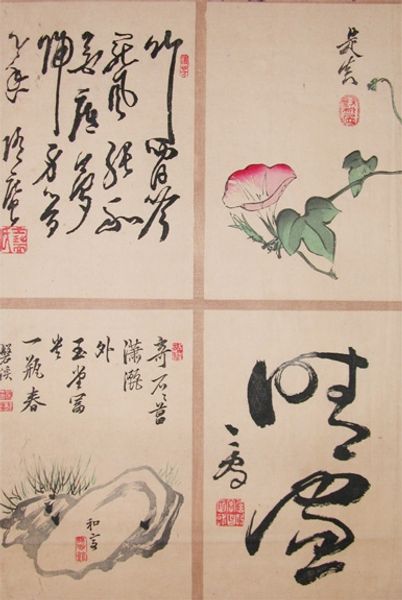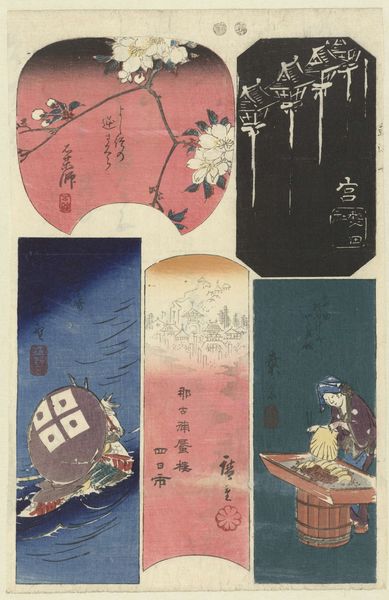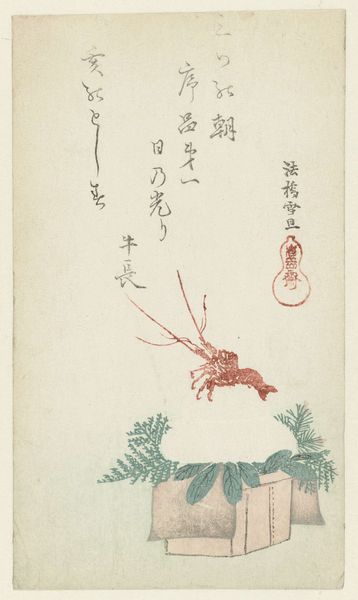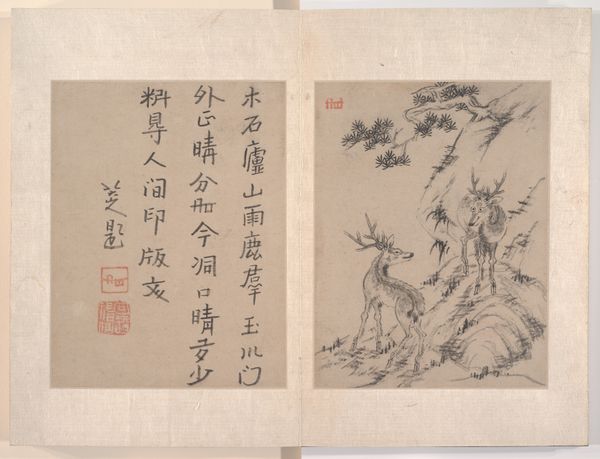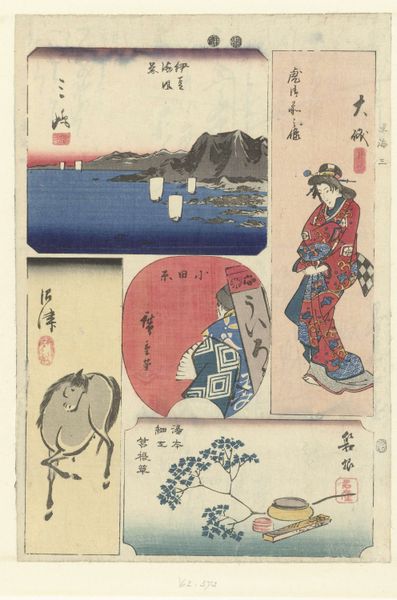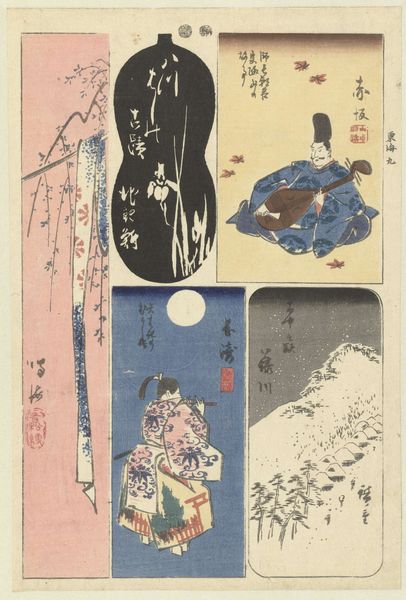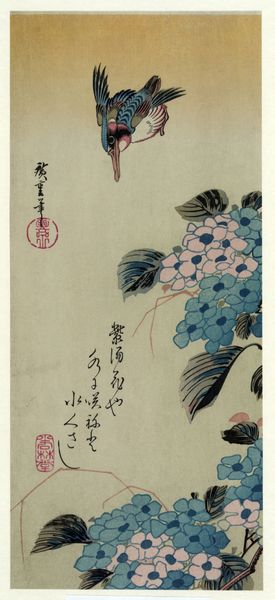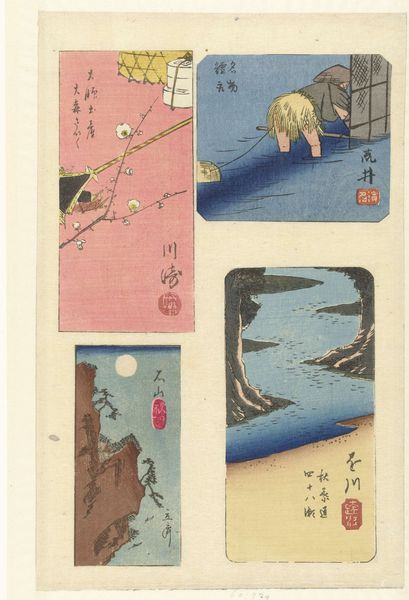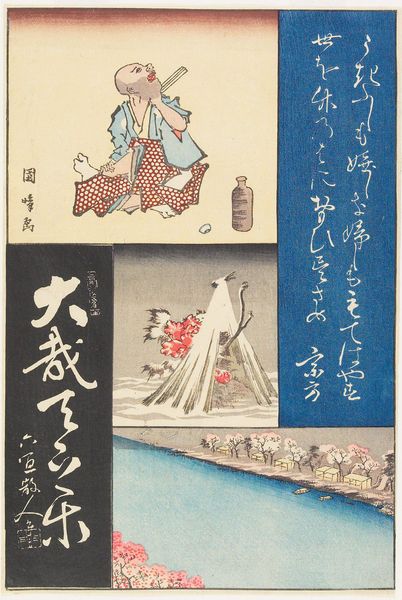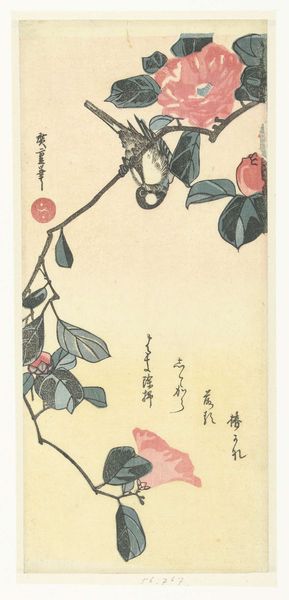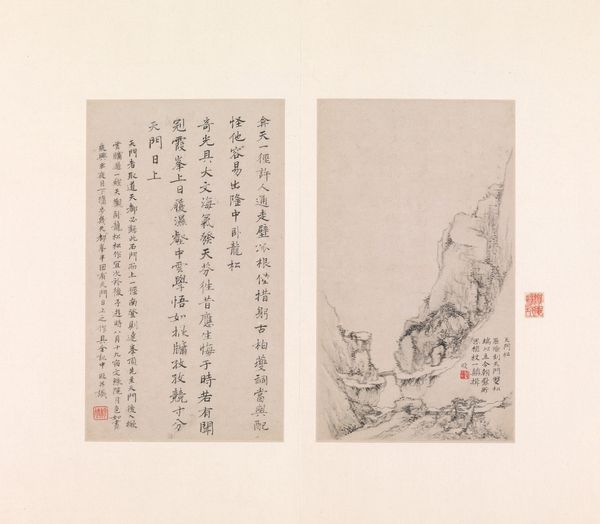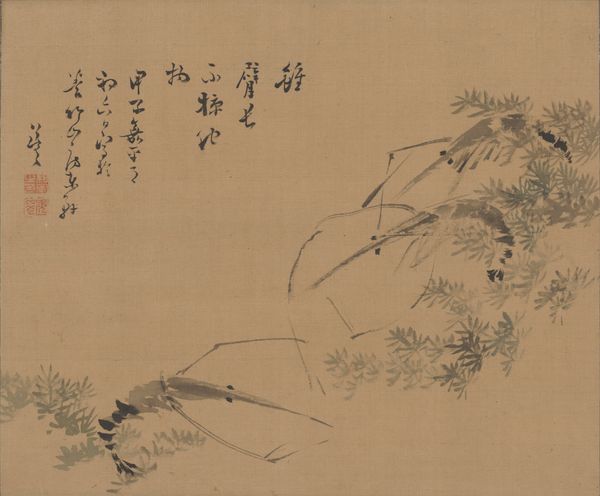
print, paper, ink, woodblock-print
# print
#
asian-art
#
landscape
#
ukiyo-e
#
paper
#
ink
#
woodblock-print
#
calligraphy
Dimensions: 14 1/4 x 9 3/4 in. (36.2 x 24.7 cm) (sheet)
Copyright: Public Domain
Curator: Stepping up to Utagawa Hiroshige’s “Four Images,” potentially from 1853, you’re faced with a compelling woodblock print currently residing at the Minneapolis Institute of Art. Editor: It immediately strikes me as a collection of moods. Melancholy almost. The somber tones contrasting with the delicate, detailed calligraphy. Curator: Yes, there’s a definite sense of varied reflection being offered here. Hiroshige employs the Ukiyo-e style, a floating world of combined landscapes and calligraphy. Take for example the floral patterns overlaid on the poem: they appear as if imbedded into our cultural memory surrounding this genre of Japanese poems. Editor: I wonder, who was the intended audience? Was this art for the elite, or did these prints serve a wider social purpose, communicating something about the society and norms of the time to people across class lines? Curator: Ukiyo-e prints were revolutionary in their accessibility; as multiples, prints defied the preciousness that enshrined traditional painting for elite consumption. The subjects speak to a collective cultural imagination beyond strict social structures, however present they may have been. What catches your eye here, though, specifically? Editor: The bottom left quadrant; that image of the lotus-like stem amidst the rain holds so much quiet strength in the face of adversity. It is as if this quadrant is hinting at the socio-economic disparity that existed at this time for the working class and how their resilience offered moments of serenity in tumultuous situations. The upper right of the print seems to be offering respite of a similar ilk: the donkey’s rider and expression exudes a kind of tranquil escape. Curator: Absolutely, these seemingly disparate images when assembled into the final artwork gain an emotional complexity; that emotional undercurrent is woven and carried over time into contemporary responses, despite the obvious gaps of cultural understanding. The composition itself echoes that sentiment: divided sections pieced together. Editor: What this has shown me, really, is the incredible role of art not just in depicting society, but in reflecting individual experience and feeling. Curator: Indeed, these four assembled scenes showcase Hiroshige's ability to condense complex narratives and sentiments into concise and relatable vignettes. Editor: Agreed. This exploration makes me reconsider how even seemingly simple works of art can provide commentary on our shared past and how culture persists across generations.
Comments
No comments
Be the first to comment and join the conversation on the ultimate creative platform.
